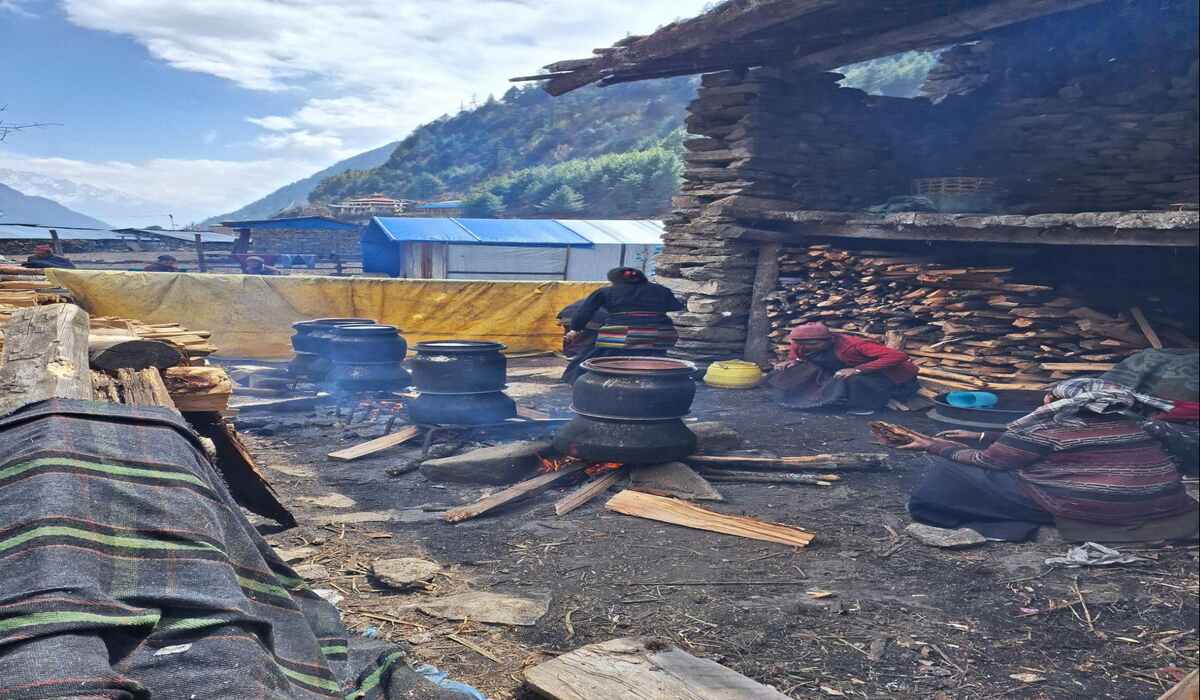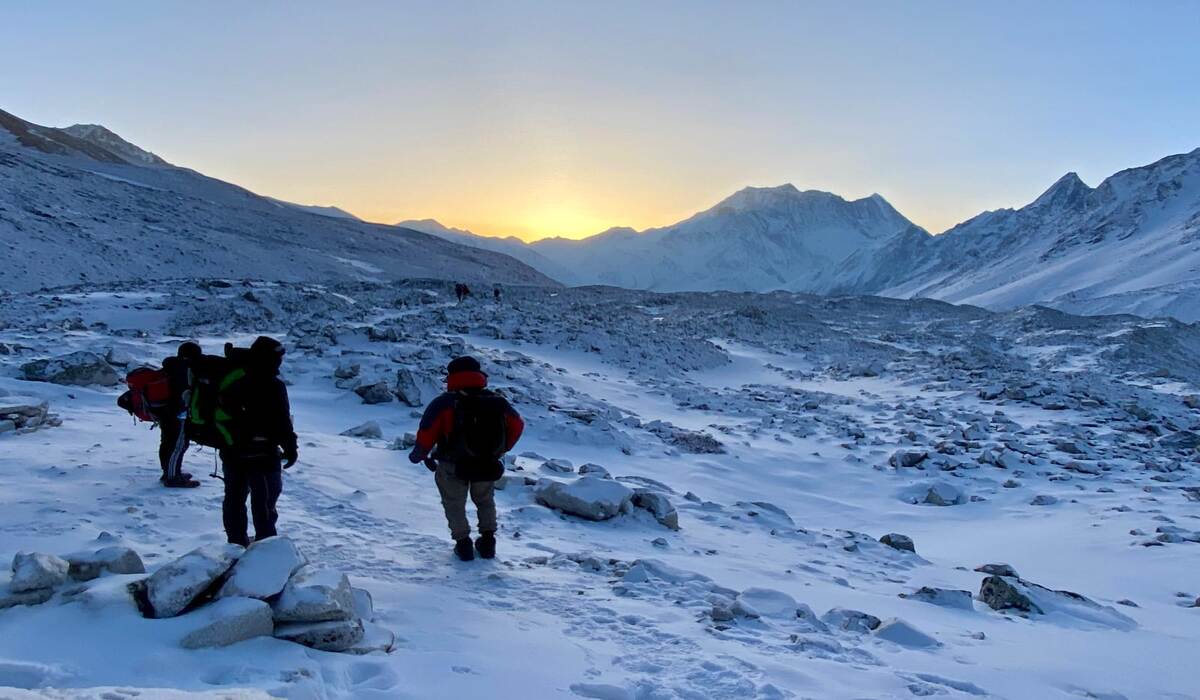Table of Contents
Are you planning your first trekking adventure in Nepal?
Nepal is a top trekking destination. Its stunning Himalayas, varied trails, and rich culture draw adventurers from around the globe.
For beginners, choosing the right trek is crucial to ensure a safe and enjoyable experience. Popular routes, like the Annapurna Circuit and Ghorepani Poon Hill, are moderately challenging. They have well-marked paths. The Manaslu Trek is more remote. But, it can reward adventurous beginners. They should do it with proper guidance.
Best Beginner-Friendly Treks in Nepal
Nepal has stunning treks for beginners. They offer great mountain views, rich culture, and easy hikes. Here’s a look at some of the best options:
1. Ghorepani Poon Hill Trek
The Ghorepani Poon Hill Trek is a 3,4 to 5-day, beginner-friendly trek in Nepal with moderate ascents and descents. Its highlight is the stunning sunrise view from Poon Hill, showcasing the Annapurna and Dhaulagiri ranges.
Trekkers pass through rhododendron forests, Gurung villages, and terraced hillsides. With clear trails, friendly teahouses, and many rest spots, it’s a perfect adventure for first-timers.
2. Langtang Valley Trek
The Langtang Valley Trek is a short drive from Kathmandu. It has easy access to the trailhead at Syabrubesi. This makes it ideal for beginners. The trek blends natural beauty and culture. It visits Tamang and Sherpa villages, Buddhist monasteries, and diverse landscapes. These include dense forests, alpine meadows, and views of Langtang Lirung. It’s a well-rounded adventure for newcomers.
3. Annapurna Base Camp (ABC) Trek
The Annapurna Base Camp Trek is perfect for first-timers. It offers a mix of challenge and accessibility over 10 or 12 days. Gradual ascents help with acclimatization. The trek has diverse ecosystems, from subtropical forests to glacial basins. The base camp, surrounded by towering peaks like Annapurna and Machapuchare, is unforgettable. With good infrastructure, including many teahouses, beginners can enjoy trekking.
4. Everest View Trek
The Everest View Trek is an excellent option for those who want to see Mount Everest without committing to the full base camp trek. Lasting 5 to 9 days, it’s a manageable adventure for beginners.
The experience begins with a thrilling flight to Lukla. It includes visits to famous Sherpa villages, like Namche Bazaar. The trek’s highlight is reaching the Everest View Hotel, where you can soak in breathtaking views of Everest and surrounding peaks. It has gradual climbs and many rest stops. So, it lets beginners enjoy the stunning beauty of the Everest region without much effort.
5. Manaslu Circuit Trek
The Manaslu Circuit Trek is harder than other beginner options. But, it’s perfect for adventurous first-timers. It offers a quieter, more cultural experience. With fewer crowds, the trek offers a sense of remote beauty not found on busier trails.

It winds through traditional, Tibetan-influenced villages and ancient monasteries. It shows a way of life untouched by modernity. The trail has lush forests, gorges, and stunning views of Manaslu, the world’s eighth-highest peak. Hiring a guide is recommended for easier navigation and deeper cultural understanding.
Permits and Regulations for Trekking in Nepal
When planning a trek in Nepal, understanding the necessary permits and regulations is crucial. These permits ensure your safety and conserve Nepal’s natural and cultural heritage.
All trekkers in Nepal need a TIMS card. It tracks their safety. There are different types and fees for independent trekkers and those in guided groups. These cards can be obtained at the Nepal Tourism Board offices or through trekking agencies.
Also, some routes require permits for conservation areas or national parks. These include the Annapurna Conservation Area Permit (ACAP) and the Langtang National Park Permit. They fund conservation efforts. For the Manaslu Trek, special restricted area permits are necessary, with costs varying by season. You must have both the Manaslu and Annapurna Conservation Area Permits. You must trek with a registered guide or agency. Independent trekking is not allowed for safety and regulatory reasons.
Why Permits Are Necessary
Permits play a crucial role in ensuring safety, regulation, and preservation for trekkers in Nepal. They let authorities track trekkers and assist in emergencies. TIMS cards monitor trekkers’ locations.
Restricted area permits help limit visitors in sensitive regions. They preserve local cultures and protect the environment. This makes trekking a sustainable activity. Also, permit fees support conservation. They fund park maintenance, aid local communities, and protect wildlife and natural resources.
Obtaining the right permits is essential for a safe and enjoyable trekking experience in Nepal. Make sure to plan ahead and ensure that you have all the necessary documentation before setting out on your adventure.
Trekking in Nepal: With or Without a Guide
When considering a trek in Nepal, one of the important decisions you’ll make is whether to hire a guide or trek independently. Here’s what you need to know about your options and the benefits of trekking with a guide:
Can You Trek in Nepal Without a Guide?

Many popular trekking routes in Nepal are good for independent trekking. These include the Annapurna Circuit, Ghorepani Poon Hill, and Langtang Valley. These trails are well-marked and have teahouses. Other trekkers frequent them. So, experienced hikers can manage them without a guide.
Some treks in restricted areas, like the Manaslu Circuit, Upper Mustang, and Kanchenjunga, require a licensed guide or porter. This regulation, enforced by the Nepalese government, protects trekkers. It also preserves the local culture and environment.
The more remote and culturally sensitive areas have challenging trails and require guided treks for effective visitor management. Ultimately, whether to trek independently or with a guide depends on your experience and the region, but for remote or difficult treks, hiring a guide is highly recommended for safety and a richer experience.
Best Time to Trek in Nepal as a Beginner
Selecting the right trek is essential for beginners in Nepal to ensure a safe and enjoyable experience. The Himalayas have treks for all levels. They range from easy, well-marked trails to tough, endurance-testing routes. It’s important to consider factors like trail difficulty, duration, altitude, and accessibility.
The timing of your trek in Nepal is crucial, as the weather conditions in the himalayas can dramatically impact your experience.
The two best seasons for trekking are spring (March to May) and Autumn ( September to November), each offering unique advantages.
Essential Gear for Beginner Trekkers
Preparing for a trek in Nepal requires thoughtful gear selection and physical preparation. Dress in layers which have a moisture-wicking base, an insulating mid-layer, and a waterproof outer layer to handle changing weather.
Invest in sturdy, waterproof, and broken-in hiking boots, moisture-wicking socks, and gaiters for protection. Essential items include a warm, four-season sleeping bag, trekking poles for balance, water purification tools, and a basic first-aid kit.
Also, pack sunscreen, a headlamp, and a dry bag for electronics. Pack light and efficiently, using a layering strategy and compression sacks to save space. Build stamina with cardio, strengthen legs and core with exercises like squats, and practice hikes with a loaded backpack to get used to the terrain and weight.
Physical Preparation and Training
Proper training is crucial to enjoy your trek and avoid injury or exhaustion. For beginners,start focusing with cardio workouts like running or cycling, aiming for 30-45 minutes, 4-5 times a week, and include interval training to boost endurance.
Focus on building your leg strength with exercises like squats and lunges, and work on core stability with planks and mountain climbers to improve balance. Practice hikes are essential to carry a loaded backpack to get used to the weight and uneven terrain, gradually increasing the intensity. If possible, hike on steep or high-elevation trails to simulate trekking conditions. With these preparations, you’ll be ready for Nepal’s breathtaking yet challenging landscapes.
Conclusion:
Preparation and awareness are key for beginners embarking on a trek in Nepal. Knowing the right season, choosing a suitable trek, packing the right gear, and understanding safety measures, such as how to prevent altitude sickness, will set you up for a successful and enjoyable experience. It’s essential to be well-informed and physically ready, but also to approach the journey with an open mind and a spirit of adventure.
As you get ready to explore the stunning trails of Nepal, remember to embrace not only the breathtaking landscapes but also the vibrant local culture. Respect the traditions, people, and the environment. Practice responsible trekking by minimizing your impact, supporting local communities, and leaving the trails as beautiful as you found them.
Finally, trekking in Nepal is more than just a physical journey, it’s a life-changing experience that brings you face-to-face with some of the world’s most awe-inspiring mountains and opens your heart to the warmth and hospitality of the Nepali people. Let the adventure transform you, inspire you, and leave you with memories that last a lifetime. Enjoy every step of this remarkable journey!


